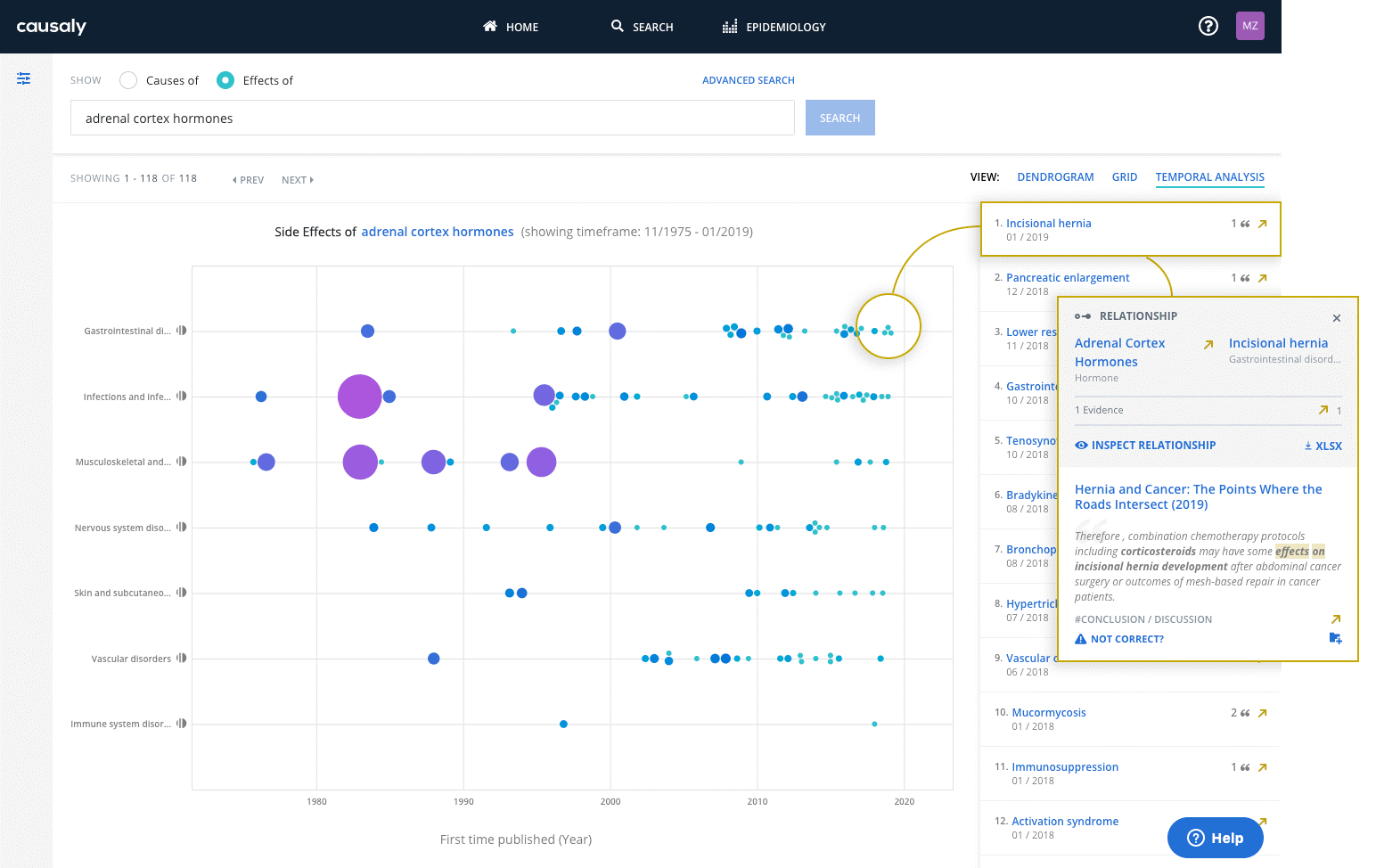The process of finding and evaluating existing clinical research is central to all areas of biomedicine, providing the foundations upon which the entire evidence-based medicine paradigm is built. Medical literature is at the heart of clinical decision making, policy development, clinical research, medical education, and the discovery and development of therapeutics. However, the process of effectively finding medical evidence within the literature is lengthy and inefficient. Strikingly, during the first stages of a systematic or targeted literature review, researchers typically spend most of their time screening articles that are not relevant.
What opportunities exist for organizations to increase their research productivity and improve evidence-based decision making at all levels? We will explore this question by comparing a traditional keyword-based literature search against Causaly’s AI based approach. Our example: using of corticosteroids in patients with asthma, along with related potential safety issues.
Traditional Methodologies
Searching biomedical literature traditionally requires the user to manually input search terms into a citation database, such as PubMed. Using a keyword search of “corticosteroids and asthma” results in tens of thousands of articles, many of which are not relevant to our actual research question. The research team has to spend weeks to screen the relevant publications in order to identify safety signals and efficacy data.
The power of machine-reading technology
AI techniques used by Causaly can address this issue and speed up the evidence search, allowing researchers and decision-makers to focus on other more productive areas. By using machine-learning algorithms and natural language processing technologies, we are able to uncover relationships between concepts that are otherwise hidden within the literature body. The information retrieval system can analyze the semantic context of the search terms and can therefore highlight sophisticated causal relationships between variables; something not possible using traditional methods.
How do corticosteroids affect asthma?
In our example, we can start by searching for available drug-disease relationships related to corticosteroids. Immediately, we get a graphical overview of these relationships and recognize asthma at the top of the results.
The search is precise, retrieving a manageable and focused set of results totaling 542 papers. Whilst PubMed retrieved all literature that mentions both corticosteroids and asthma (over 17,000 academic articles), Causaly automatically restricted results to that literature which explicitly describes how corticosteroids affect asthma.
For each retrieved article, standard citation information is presented alongside with the statement from within the abstract that supports the relationship. Rather than simply providing the citation data, Causaly brings the researcher directly to the heart of the evidence.
Furthermore, the platform uncovers and categorizes the different ways that corticosteroids affect asthma. We can see that most of the evidence suggests that corticosteroids reduce asthma, but some evidence might suggest otherwise. As an example, one search result highlights that corticosteroids are associated with an increase of asthma in infants.
Effortless classification of side-effects
Monitoring new signals of potential adverse events in global literature is an important and ongoing activity of pharmaceutical companies. The aspect of temporality, i.e. when was a safety event published for the first time in global literature, is of particular importance.
Causaly sorts all evidence by publication date, and records all the relationships that indicate an increase of a disease due to the use of corticosteroids. The researcher is then able to chart and investigate the results in a temporal view to track the new safety signals that have been registered in literature. The graphical view enables effortless classification of side-effects per system organ class to further refine and explore the results, along with references to the primary literature that created each connection.
These insights were revealed within seconds. Comparable insights from a traditional PubMed search can take weeks of effort, and are to be repeated in a continuous manner to stay compliant with adverse event reporting requirements. Causaly continuously machine-reads global literature and records safety events as they are being published.
Artificial Intelligence technologies can significantly enhance the literature searching process, offering methods to gain a high-level view and quickly explore the literature in depth, as well as in specific causal contexts. Traditional searching is unable to discover relationships between concepts in the literature, other than that they co-occur in the article. Using AI technologies to effectively screen out the noise of keyword search can increase research productivity, while enabling discovery of evidence, and ultimately improve evidence-based decision making in research intensive organizations.


